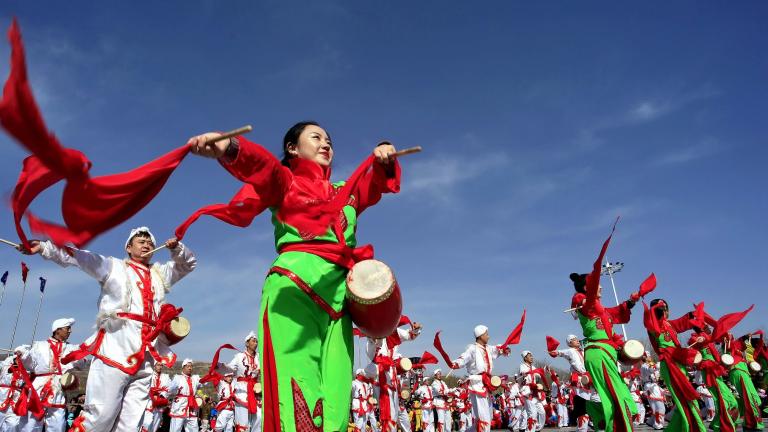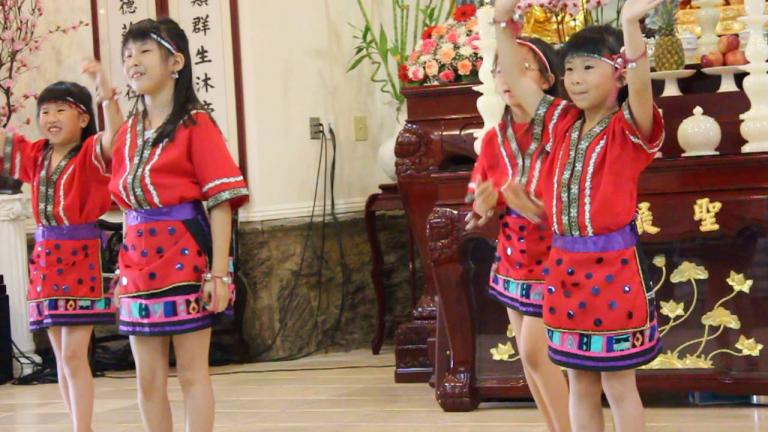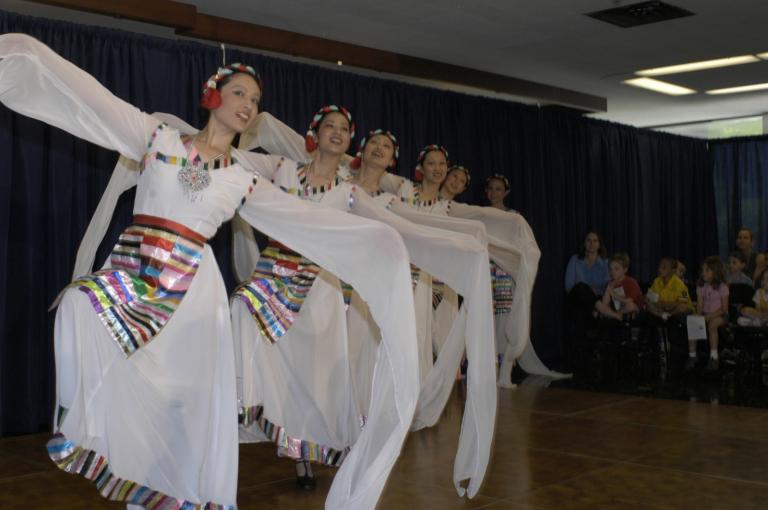When Singing is not Enough,People Dance
3 min readChinese dances have a long history.In the primitive times,they were a basic formof culture.Wen Yiduo(1899-1946)wrote in On Dances:”Primitive dances were a kind of drastic,nervous and tiring rhythmic movements because only in this way could they feel life emotions to the maximum extent..In highly rhythmic movements,dancers attained a sense of real life.”In view of the colored pottery basin with dance patterns unearthed from Upper Sunjiazhai in Qinghai,dances in the real sense emerged in China at least 5,000 years ago.Three decorative dance patterns were painted on the inner wall near the opening.There are five dancers dancing to music hand in hand and facing the same direction in each group with braid-like decorations on their heads and drifting skirt-like decorations below.Their head decorations and lower decorations drift to the left and right respectively,making their dance more dynamic.Some researchers think the picture vividly reproduces the scene of beast hunting by several groups of clansmen.

We can see ancient dancing scenes from historical and cultural relics of later generations,e.g. there are many dancing girls drawn on Dunhuang murals. These dancing girls can be classified into two categories: heavenly dancing girls and secular dancing girls. The former can be seen in pictures of dancing and music playing among the Dunhuang murals reflecting the scene of Buddhists’ life in heaven. According to Buddhist scriptures’ description, heaven is a world of perfect bliss full of singing, dancing and joy. Heaven in Dunhuang murals has a very joyous and free atmosphere with flying apsaras dancing in the sky and girls singing and dancing in front of palaces.
These performances of these dancing girls and singing girls include virtual ones basedon Buddhist scriptures and realistic ones depicting real life. Secular dancing girls, as opposed to heavenly dancing girls, are mostly seen in pictures of providers’ singing and dancing,e.g. there are pictures of providers’ singing and dancing in No.275 Mogao Grotto. On the right picture, three people are playing the reed pipe wind instrument, the Chinese lute and the ancient plucked stringed instrument, and on the left picture, two people are dancing face to face, and twisting their bodies and legs.
They are standing under a tree in a very lively and natural performance. From these pictures of secular dancing and singing, we can see the real situation of ancient dances and music.

From a historical perspective, Chinese dances’ development underwent ups and downs, and reached peaks and bottoms. The Western Zhou Dynasty’s musical dances were the first peak in China’s dance development history. Civil and martial dances eulogized emperors of past dynasties with imposing momentum. In the flourishing age of the Tang Dynasty, court dances thrived, including robust dances and soft dances. Warriors’ Triumphal Dance and Rainbow and Feather Garment Dance have been handed down for thousands of years. After the Song and Yuan dynasties, folk dances were still popular, but many famous classical dances of previous dynasties were no longer in vogue, replaced by emerging dances in traditional Chinese opera. Opera dances gradually matured in the Ming and Qing dynasties, and became the basic content of acting and acrobatic fighting among traditional Chinese opera’s four basic means of performance. Its abundant stunt performances such as pheasant quill skills, winged cap skills, plait skills, carpet skills and colorful dances enhanced traditional Chinese opera’s expressiveness. Dances as independent theater art gradually maturedin China after the 1950s. After China carried out reform and opening up in the late 1970s, Western modern dances were introduced into China through various channels, and exerted huge influence on Chinese traditional dances. At present, traditional dances, modern dances and dances of combined Chinese and Western styles coexist in China’s dancing circles, forming a spectacular scene.









